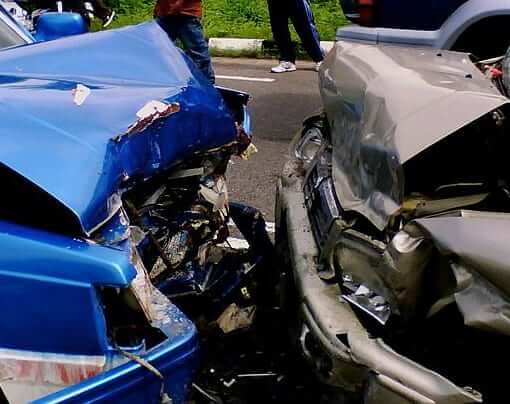
Vehicle-to-vehicle (V2V) “Here I am” technology will be required in every car in the future, if the U.S. Government’s plans come to fruition. v2v technology is a wireless technology similar to 802.11, such as what you may be using to read this article, only it is a vehicle-to-vehicle intranet, rather than the Internet.
According to the Department of Transportation (DOT), “Vehicle-to-Vehicle Communications for Safety is the dynamic wireless exchange of data between nearby vehicles that offers the opportunity for significant safety improvements. By exchanging anonymous, vehicle-based data regarding position, speed, and location (at a minimum), V2V communications enables a vehicle to: sense threats and hazards with a 360 degree awareness of the position of other vehicles and the threat or hazard they present; calculate risk; issue driver advisories or warnings; or take pre-emptive actions to avoid and mitigate crashes. At the heart of V2V communications is a basic application known as the ‘Here I Am’ data message.”
DOT says that as many as 80% of accidents that don’t involve drunk drivers or mechanical failure could be prevented with the use of v2v technology.
This leads us to ask: after drunk driver accidents and mechanical failure, how many accidents are there – in other words, 80% of what?
The Internet Patrol is completely free, and reader-supported. Your tips via CashApp, Venmo, or Paypal are appreciated! Receipts will come from ISIPP.
It turns out that, according to the CDC’s own statistics, nearly 31% of all accidents are alcohol-related. “In 2010, 10,228 people were killed in alcohol-impaired driving crashes, accounting for nearly one-third (31%) of all traffic-related deaths in the United States.”
Some sites place accidents due to impaired driving (alcohol or drugs) at as high as 45%.
Mechanical failure accounts for another 12-13% of all accidents.
According to the Department of Transportation, in 2010 there were 5,419,000 automobile accidents.
Taking these figures as reasonably accurate, that means that approximately 1,679,890 accidents were drunk driving related, with as many as 2,438,550 being attributable to either alcohol or drugs.
At least another 65,280 are attributable to mechanical failure.
That leaves approximately 2,915,170 accidents where the cause was other than drugs, alcohol or mechanical failure. So, according to this back-of-the-envelope calculation, the government is estimating that (using current figures) 2,332,136 accidents could be prevented by v2v technology.
Or, put another way, the government is estimating that approximately 34% of all accidents could be prevented with v2v technology.
Of course, this includes all accidents, so even minor fender-benders, provided they have been reported and so can be counted.
According to Transportation Secretary Anthony Fixx, the announcement is intended to send a strong signal to auto makers that “we believe the wave of the future is vehicle-to-vehicle technology.”
“It will change driving as we know it over time. Over time, we’ll see a reduction in crashes. Automobile makers will rethink how they design and construct cars because they will no longer be constructing cars to survive a crash, but building them to avoid a crash,” opined Scott Belcher, CEO of the Intelligent Transportation Society of America.
Says Secretary Fixx, “Vehicle-to-vehicle technology represents the next generation of auto safety improvements, building on the life-saving achievements we’ve already seen with safety belts and air bags. By helping drivers avoid crashes, this technology will play a key role in improving the way people get where they need to go while ensuring that the U.S. remains the leader in the global automotive industry.”
The Intelligent Transportation Society of America estimates that adding the technology to new vehicles will increase the cost of a new car by between $100 and $200.
In a press release this week, the Department of Transportation (DOT) said:
The safety applications currently being developed provide warnings to drivers so that they can prevent imminent collisions, but do not automatically operate any vehicle systems, such as braking or steering. NHTSA is also considering future actions on active safety technologies that rely on on-board sensors. Those technologies are eventually expected to blend with the V2V technology. NHTSA issued an Interim Statement of Policy in 2013 explaining its approach to these various streams of innovation. In addition to enhancing safety, these future applications and technologies could help drivers to conserve fuel and save time.
V2V technology does not involve exchanging or recording personal information or tracking vehicle movements. The information sent between vehicles does not identify those vehicles, but merely contains basic safety data. In fact, the system as contemplated contains several layers of security and privacy protection to ensure that vehicles can rely on messages sent from other vehicles and that a vehicle or group of vehicles would be identifiable through defined procedures only if there is a need to fix a safety problem.
You can read DOT’s full press release on v2v technology here.
The Internet Patrol is completely free, and reader-supported. Your tips via CashApp, Venmo, or Paypal are appreciated! Receipts will come from ISIPP.









